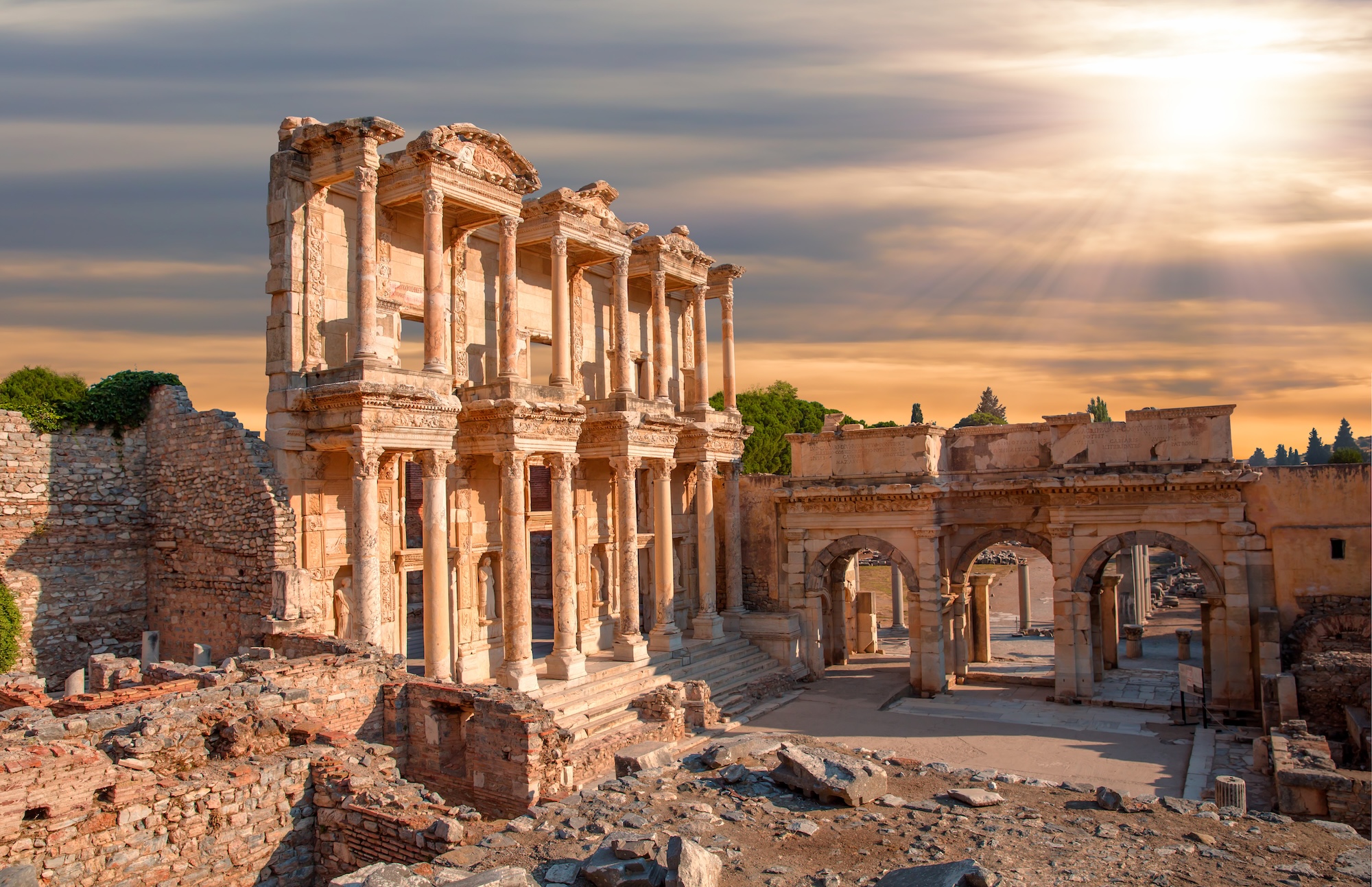
World Travel Tips
What Should You Do in Turkey?
A Journey Through History, Culture, and Natural Beauty
Turkey, straddling the boundary between Europe and Asia, is a country rich in history, culture, and natural wonders. From ancient ruins and bustling bazaars to breathtaking landscapes and pristine coastlines, Turkey offers a diverse array of experiences for every traveler. Here are the top 10 things to do in Turkey that will make your visit unforgettable.
1. Explore Istanbul’s Historic Sites
Istanbul, the vibrant city straddling two continents, is a treasure trove of history and culture. Begin your journey with the iconic Hagia Sophia, a majestic structure that has served as a cathedral, mosque, and now a museum. Nearby, the Blue Mosque, known for its stunning tilework, and the Topkapi Palace, the former residence of Ottoman sultans, are must-see landmarks. Don’t miss a stroll through the Grand Bazaar, one of the largest and oldest covered markets in the world, where you can shop for everything from spices to jewelry.
2. Discover the Ancient Ruins of Ephesus

Ephesus, located near the modern town of Selçuk, is one of the best-preserved ancient cities in the Mediterranean. Walk through the Marble Street, explore the impressive Library of Celsus, and marvel at the grand amphitheater. The site offers a fascinating glimpse into Roman life and architecture.
3. Soak in the Thermal Waters of Pamukkale

Pamukkale, meaning “Cotton Castle” in Turkish, is renowned for its stunning white travertine terraces formed by mineral-rich thermal waters. Take a dip in the warm, calcium-rich pools while enjoying panoramic views of the surrounding landscape. Nearby, the ancient city of Hierapolis is also worth exploring.
4. Wander Through the Fairy Chimneys of Cappadocia

Cappadocia’s surreal landscape, with its “fairy chimneys” and rock-cut dwellings, is a must-see. Take a hot air balloon ride at sunrise for an unforgettable aerial view of the unique rock formations and valleys. Explore the region’s underground cities and hike through the scenic Love Valley or Rose Valley for a closer look at the area’s natural wonders.
5. Relax on the Turquoise Coast
Turkey’s Turquoise Coast, also known as the Lycian Coast, boasts some of the country’s most beautiful beaches and crystal-clear waters. Visit Antalya for its charming old town and scenic harbor, or explore the secluded coves and ancient ruins of Kaş and Kalkan. The coastal town of Bodrum is another popular destination, known for its vibrant nightlife and historic sites.
6. Marvel at the Ruins of Troy
Troy, immortalized by Homer’s epic tales, is an archaeological site located near the modern town of Truva. Explore the ancient city’s ruins and see the famous Trojan Horse replica. The site offers a fascinating insight into one of history’s most legendary civilizations.
7. Experience the Whirling Dervishes in Konya
Konya is known for its spiritual heritage and is the home of the Whirling Dervishes. Attend a Sema ceremony, a mesmerizing performance of spinning and chanting, which is a form of meditation and devotion in Sufism. The Mevlana Museum, dedicated to the poet and philosopher Rumi, provides further insight into this mystical tradition.
8. Explore the Ancient City of Pergamon
Pergamon, located in modern-day Bergama, was once a major center of learning and culture. Visit the impressive Acropolis, where you can see the well-preserved ruins of the Temple of Trajan and the ancient theater with its steep seating. The Asclepius, an ancient healing center, is also noteworthy.
9. Trek Through the Lycian Way
The Lycian Way is one of the world’s most scenic long-distance trails, stretching 540 kilometers along Turkey’s southwestern coast. Hike through diverse landscapes, from coastal paths and ancient ruins to rugged mountains. The trail offers stunning views of the Mediterranean Sea and encounters with traditional Turkish villages.
10. Savor Turkish Cuisine
No trip to Turkey is complete without indulging in its rich culinary traditions. Enjoy a traditional Turkish breakfast with olives, cheeses, and fresh bread, or savor a delicious kebab from a local grill. Don’t miss out on sampling baklava, the sweet pastry layered with nuts and honey. Visit a traditional meyhane (tavern) for a memorable dining experience with meze (appetizers) and raki (aniseed spirit).
Final Thoughts
Turkey is a land of diverse experiences, offering everything from ancient wonders to stunning natural landscapes. Whether you’re exploring historic sites, relaxing on beautiful beaches, or immersing yourself in local culture, Turkey promises a journey full of unforgettable moments. So pack your bags and get ready to discover the magic of this fascinating country!
Seasonal Recommendations
? Spring (March-May): Spring is the most popular time to visit Turkey, thanks to its mild weather and vibrant natural beauty. Temperatures generally range from 15°C to 25°C (59°F to 77°F), making it ideal for sightseeing and outdoor exploration. This season is perfect for strolling through Istanbul’s historic sites, wandering the ancient ruins of Ephesus, or enjoying a hike along the scenic Lycian Way. Tulips bloom across Istanbul, local festivals begin to pick up, and the comfortable climate makes travel between cities enjoyable. It’s also an ideal time to experience Turkey’s rich culture before the summer crowds arrive.
☀️ Summer (June-August): Summer in Turkey is hot and bustling, especially along the coasts and in major tourist cities. Temperatures can climb between 30°C and 40°C (86°F to 104°F), particularly in inland regions. The Turquoise Coast draws visitors with its clear waters and beach resorts, while sunrise hot air balloon rides over the fairy chimneys of Cappadocia offer unforgettable views. Despite the heat, this is peak season for festivals, nightlife, and Mediterranean cruising. Be prepared for large crowds and higher prices, especially in beach towns and historical hotspots like Pamukkale and Ephesus.
? Autumn (September-November): Autumn is a wonderful time to visit Turkey, offering cooler temperatures (ranging from 15°C to 28°C / 59°F to 82°F), fewer crowds, and stunning golden landscapes. This season is great for exploring the ancient city of Pergamon or taking in spiritual performances like the Whirling Dervishes in Konya. The Mediterranean and Aegean coasts are still warm enough for swimming in early autumn, and the air is perfect for hiking, sightseeing, and food tours. With harvest season in full swing, this is also a great time to dive into Turkish cuisine and regional specialties.
❄️ Winter (December-February): Winter is the least crowded time to explore Turkey, though it offers a different kind of charm. Coastal regions remain mild, with temperatures ranging from 5°C to 15°C (41°F to 59°F), while inland areas like Cappadocia and central Anatolia can get snow. It’s a peaceful time to enjoy thermal baths in Pamukkale, explore Istanbul’s museums and mosques, or take a quiet walk through the ruins of Troy without the crowds. Though some beach resorts close for the season, winter is ideal for travelers who want a slower pace, cozy cafes, and an off-the-beaten-path feel.
Tips for Your Visit
Getting Around
- Public Transportation: Turkey offers an efficient and affordable public transport system, including buses, trams, and ferries, especially in cities like Istanbul. Make sure to get an Istanbulkart for easy access to these services.
- Taxis and Ride-Sharing: While taxis are widely available, it’s best to agree on a fare before starting your journey or ensure the meter is running. Uber is also available in larger cities for convenience.
- Walking and Exploration: Many historical sites in cities like Istanbul and Cappadocia are best explored on foot. Be prepared for hilly terrain and uneven sidewalks in older areas.
Local Cuisine
- Don’t Miss Kebabs: Turkey is known for its delicious kebabs, especially the döner, şiş, and Adana kebabs. Be sure to try them from local vendors or authentic restaurants.
- Traditional Dishes: Indulge in Turkish delights like mezes (appetizers), baklava (a sweet pastry), and lahmacun (Turkish pizza) for a complete culinary experience.
- Tea Culture: Turkish tea (çay) is a staple of daily life, and you’ll often be offered a glass in restaurants or cafes. Don’t miss the chance to enjoy this refreshing beverage with a sweet treat.
Language
- Learn a Few Basics: While many people in Turkey speak some English, learning a few words in Turkish, like “Merhaba” (Hello) or “Teşekkür ederim” (Thank you), can go a long way in showing respect to locals.
- Use Translation Apps: In less touristy areas, English may not be as widely spoken. A translation app can be helpful for communicating more effectively, especially in smaller towns.
Safety
- Stay Aware of Your Surroundings: While Turkey is generally safe for tourists, keep an eye on your belongings, especially in crowded areas like markets or public transport.
- Local Customs and Respect: Dress modestly when visiting religious sites like mosques. Removing shoes before entering is also customary.
- Emergency Numbers: In case of an emergency, dial 112 for ambulance services, 155 for the police, and 110 for the fire department.
The 3 Most Popular Cities
Three cities stand out as the most popular for tourists to visit and explore in Turkey: Istanbul, Cappadocia, and Antalya. Each of these cities offers its own unique charm, whether it’s the historical grandeur of Istanbul, the otherworldly landscapes of Cappadocia, or the Mediterranean beauty and ancient ruins of Antalya. These cities are the perfect starting points for anyone looking to experience the best that Turkey has to offer.
1. Istanbul
Why It’s Popular: Istanbul is Turkey’s cultural and historical hub, offering a vibrant blend of the old and the new. It’s the only city in the world that straddles two continents—Europe and Asia—making it a unique destination. With its rich history, stunning architecture, and bustling atmosphere, it attracts millions of visitors each year.
Must-See Attractions:
- Hagia Sophia (a former church and mosque, now a museum)
- Blue Mosque
- Topkapi Palace
- Basilica Cistern
- Grand Bazaar (one of the largest covered markets in the world)
What to Do: Explore the fascinating historical sites, enjoy Bosphorus cruises, shop at the Grand Bazaar, and dive into the local food scene with dishes like kebabs, baklava, and Turkish coffee.
2. Cappadocia (Göreme, Nevşehir)
Why It’s Popular: Cappadocia is world-renowned for its surreal landscapes, including “fairy chimneys” and cave dwellings. This region is especially famous for its hot air balloon rides, which offer breathtaking views over its unique rock formations. It’s a magical destination for nature lovers, adventure seekers, and history enthusiasts.
Must-See Attractions:
- Göreme National Park and the Rock Sites of Cappadocia (UNESCO World Heritage Site)
- Hot Air Balloon Ride (a bucket-list activity)
- Derinkuyu Underground City
- Pasabag (Monks Valley)
- Uçhisar Castle
What to Do: Experience a sunrise hot air balloon ride, visit the fairy chimneys, explore ancient cave churches, and stay in cave hotels for a unique lodging experience.
3. Antalya
Why It’s Popular: Antalya, located on the Mediterranean coast, is a major resort destination known for its beautiful beaches, luxury resorts, and ancient ruins. It offers a combination of natural beauty and rich history, making it a perfect destination for relaxation, cultural exploration, and outdoor activities.
Must-See Attractions:
- Old Town (Kaleiçi)
- Hadrian’s Gate
- Antalya Museum
- Düden Waterfalls
- Perge Ancient City
What to Do: Enjoy the pristine beaches, explore ancient ruins, visit the waterfalls, and stroll through the charming streets of Kaleiçi.
Tips for Dining in Turkey
Turkey offers a culinary experience unlike any other, with its unique fusion of Mediterranean, Middle Eastern, and Central Asian influences. From savory kebabs and mezes to sweet baklava and Turkish tea, dining in Turkey is an unforgettable adventure. Whether you’re enjoying a meal at a bustling street market or at a cozy local restaurant, there are a few things to keep in mind to ensure you enjoy the best of Turkish cuisine safely and respectfully. Here are some tips to help you navigate the dining scene in Turkey!
1. Savor the Flavors of Turkish Cuisine
Turkish cuisine is known for its rich flavors, fresh ingredients, and diverse regional specialties. Whether you’re in Istanbul, Ankara, or a small village, you’ll find a variety of dishes that will tantalize your taste buds.
Tip: Be sure to try the iconic kebabs, including döner, Adana, and iskender. Turkish mezes (small appetizers) like hummus, baba ganoush, and stuffed grape leaves are perfect for sharing and provide a true taste of the country’s culinary diversity. And don’t forget the traditional baklava for dessert—a sweet, flaky pastry that’s a must-try.
2. Tap Water: Safe or Not?
In most tourist areas, tap water in Turkey is technically safe to drink, but it’s generally not recommended for visitors. The water quality can vary depending on the region, and the taste may be different from what you’re used to.
Tip: To avoid any discomfort, it’s safer to stick with bottled water. You can easily find bottled water in restaurants, supermarkets, and corner shops. Always check that the seal is intact before purchasing.
3. Turkish Tea and Coffee Etiquette
Tea and coffee play an essential role in Turkish culture. Turkish tea (çay) is typically served in small tulip-shaped glasses, and it’s often offered to guests as a sign of hospitality. Turkish coffee, rich and flavorful, is another must-try, usually served with a glass of water and a piece of Turkish delight.
Tip: If you’re offered tea or coffee, it’s polite to accept it. When finishing, it’s customary to leave a small amount in your glass or cup to show that you’ve enjoyed your drink.
4. Dining Etiquette: Do’s and Don’ts
While dining in Turkey is a social and festive affair, it’s important to be aware of a few local customs. Dining habits may vary depending on the region, but there are some general etiquette tips that will help you navigate your meals.
Tip: When visiting a mosque or other religious sites, dress modestly, especially when entering the dining areas. If you’re invited to a Turkish home for a meal, it’s polite to bring a small gift, such as flowers or chocolates, as a sign of appreciation.
5. Street Food: A Must-Try Adventure
Street food is a major part of Turkish food culture, offering an authentic, affordable, and delicious way to experience local cuisine. From simit (sesame-crusted bread rings) to köfte (meatballs), there’s no shortage of tasty options available on the streets.
Tip: While indulging in street food, look for vendors with high customer turnover, as this generally indicates the food is fresh and prepared in a clean environment. Always ensure that the food is cooked thoroughly to avoid any potential health issues.
6. Eating with Your Hands: A Cultural Norm
In Turkey, it’s common to eat with your hands, particularly when enjoying dishes like kebabs or pide (Turkish pizza). However, this practice is typically reserved for certain meals, and you’ll likely be provided with utensils in more formal settings.
Tip: If you’re eating with your hands, use your right hand only. The left hand is considered impolite in Turkish culture for eating or handing things to others.
Conclusion
Dining in Turkey is a journey of flavors and experiences, where you can enjoy everything from world-famous kebabs to the comforting ritual of Turkish tea. By following these tips, you’ll be able to embrace the local food culture while staying safe and respectful. So, come hungry, be adventurous, and immerse yourself in the rich culinary traditions of this beautiful country! Afiyet olsun! (Enjoy your meal!)








